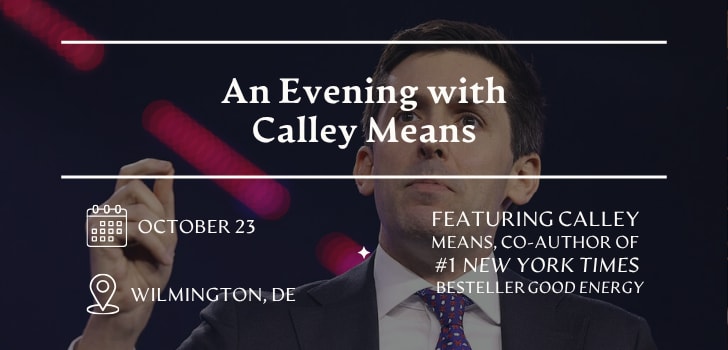|
 |
Faith and the Modern Mind
Intercollegiate Review | Conservatism's sharpest voices, curated weekly. ISI's weekly newsletter brings you the best in serious conservative thought.
The Rise of the Young Christian Right
Generation Z is easily stereotyped. Having grown up in the age of the iPhone and social media, Gen Zers are said to be addicted to TikTok, disconnected from the real world, and fiercely devoted to progressive ideology. Yet this bleak picture only reflects one segment of America’s second youngest generation.
In a guest essay for the New York Times, history professor Daniel K. Williams highlights a lesser-known portion of Gen Z: the conservative Christians. Twenty-four percent of Gen Zers attend church every week—a higher rate than both millennials and Gen Xers. Many of these young Christians also lean conservative. Williams suggests that many Gen Zers are drawn to the Christian faith because it gives their life a clear purpose in contrast with the emptiness of secular liberalism.
Williams compares the Gen Z Christian right to the Christian right of the 1980s. While the religious right was once dominated by Baptists, Gen Z Christians are more charismatic. They tend to view politics through the lens of spiritual warfare, and they often focus more on the broader battle between good and evil than on specific policy agendas. These young Christian conservatives bring a unique fervor to their political engagement that will undoubtedly shape America for generations to come.
Read the rest of Williams’s essay online here.
|
A Cockney Catastrophe
Even outside of England, most people know a cockney accent when they hear it. But cockney is more than just a dialect—it’s an entire culture with its own history, traditions, and landmarks. Emblematic of the British working class, cockneys are a proud, scrappy people whose families have lived and worked in London for centuries.
Today, however, massive numbers of cockneys have been displaced from their native city and forced into surrounding counties. In an article for First Things, Louise Perry discusses this dramatic demographic shift in London. “When I was born in West London in 1992, the city was 71 percent white British; when my youngest son was born last year…that figure had fallen to 36.8 percent.” The majority of those who have left, she notes, are the working-class cockneys—whom she describes as London’s indigenous people.
Perry says that the departure of the cockneys is primarily the result of economic policies by British elites that prioritize immigrant communities, particularly in the allocation of social housing. As a result of these policy shifts over the last fifty years, London housing has become accessible only to the ultrarich and the ethnic minorities who qualify for social support.
Read the rest of Perry’s article to find out more about what the cockneys’ exodus means for London.
Compendium
Every article we feature here is available to read for free. Articles from paywalled publications are available through gift links.
Daniel McCarthy, ISI’s Vice President of Publications and Editor-in-Chief of Modern Age, on the meaning of Columbus Day in The Daily Signal.
Derek Thompson on how all media is converging into a constant stream like television in his Substack.
David Brooks on the Democrats’ abandonment of education accountability and reform in The New York Times.
Eric Kaufmann on the recent decrease in transgenderism in Unherd.
Cajetan Skowronski on the desecration of sacred cathedrals in The European Conservative.
Geoff Shullenberger on the fusion of theology, technology, and accelerationist philosophy in Silicon Valley in Compact Magazine.
Kristen Ziccarelli and Joshua Treviño on Columbus Day and the reshaping of the New World in American Mind.
Yuval Levin on the necessary virtues to sustain a liberal society in The Hedgehog Review.
Jonathan Jakubowicz on Venezuela’s Nobel laureate and the struggle against dictatorship in The Free Press.
Christopher Rufo on MIT’s crisis of academic freedom in his Substack.
Upcoming ISI Events:
If you enjoy what you’re reading here, we invite you to engage with ISI at one of our upcoming in-person events.
An Evening with Calley Means | October 23 | Wilmington, DE
Join ISI and the Brandywine Women’s Coalition for an evening with Calley Means, co-author of the #1 New York Times bestseller Good Energy: The Surprising Connection Between Metabolism and Limitless Health. Means will share insights on America’s rising chronic disease crisis and offer practical steps to reclaim lasting vitality.An Evening with Ann Coulter | November 8 | Wilmington, DE
Join ISI for a reception and dinner with best-selling author and nationally renowned columnist Ann Coulter. Coulter will deliver an unforgettable keynote address on the role of conservative media in shaping the national conversation, drawing on her illustrious media career.
Visit our events page on our website to see all upcoming events.
This week, from ISI’s Digital Media:
In this clip from Episode 2 of Project Cosmos, “Greatness & Goodness: A Guide for Young Men in Dark Times,” the panel compares Ronald Reagan and Donald Trump, arguing that both leaders defied the intellectual orthodoxies of their eras. They define and explore the role of such leaders in breaking through false conventions mistaken for eternal truths.
Watch the full episode here.
Subscribe to our YouTube channel for more content like this.
This week, from the Collegiate Network:
ISI’s Collegiate Network supports over 80 student-run publications across the country, empowering students to run independent college newspapers, magazines, and journals that report on important issues ignored by the mainstream media.
Staying Quietly in My Room via Cogitare Magazine
An argument that true contentment comes not from activity or routine but from finding lasting joy and purpose in God’s presence and plan.The Myth of American Values—National Ideas or Naive Idealism? via The Texas Horn
This article asks if American “virtues” are guiding stars or just smoke & mirrors for power.Why Are BYU English Professors Doing Land Acknowledgments? via The Cougar Chronicle
BYU professors’ use of land acknowledgments signals creeping progressive ideology on campus.American Sickness via The Harper Review
This article claims that America’s political despair is really a symptom of collective psychological illness, and that only a renewed belief in progress can serve as the nation’s cure.College Republicans, Democrats Clash in Campus Debate via The Irish Rover
Notre Dame’s BridgeND debate brought College Republicans and Democrats face-to-face for the first time in three years.
Visit our Student Journalism section to read more from the Collegiate Network.
Dangerous Impulses: Transhumanism in the 21st Century
Every person feels the limitations of biological reality. From the basic necessities of sleep and sustenance to the adverse experiences of illness and disability, our existence is inescapably shaped by the nature of the human body. Yet many today seek to deny these realities, using new technologies in an attempt to “transcend” the body’s limits.
In this week’s article from Modern Age, C. R. Wiley discusses the rapid advance of the transhumanist impulse in the 21st century. He reviews Grayson Quay’s book The Transhumanist Temptation: How Technology and Ideology Are Reshaping Humanity—and How to Resist, which argues that the lure of transhumanism far predates today’s controversial technologies. Both Wiley and Quay link the transhumanist project to mankind’s fundamental desire to be like gods, which, under a Christian view, led to the fall of man.
The antidote to transhumanism, Wiley suggests, is to recover a teleological view of human nature—“Humanity stands no chance against the predations of transhumanism if we can’t even define what it means to be human.” If we are grounded in a philosophically sound view of the human person, we can discern which technologies offer helpful remedies to human ailments and which ones indulge a dangerous temptation to override humanity itself.
Read Wiley’s full review here on the Modern Age website.
Modern Age is ISI’s flagship publication. Visit modernagejournal.com and subscribe for a free daily newsletter.
“What we call Man’s power over Nature turns out to be a power exercised by some men over other men with Nature as its instrument.”
– C.S. Lewis, The Abolition of Man
Celebrate America’s semiquincentennial with ISI and help shape the next 250 years of our country. Your support of the America 500 Education Fund will help ISI reach, teach, and launch the next generation of conservative leaders. Visit isi.org/america500 to learn more.




